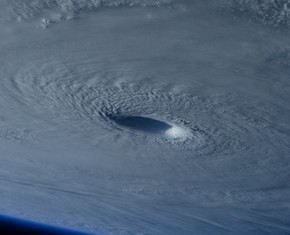The views expressed in our content reflect individual perspectives and do not represent the authoritative views of the Baha'i Faith.
There’s as many atoms in a single molecule of your DNA as there are stars in the typical galaxy. We are, each of us, a little universe. – Neil deGrasse Tyson
Universal existences can be likened and compared to particular ones, for both are subject to one natural order, one universal law, and one divine arrangement. For instance, you will find the smallest atoms to be similar in their general structure to the greatest entities in the universe, and it is clear that they have proceeded from one laboratory of might according to one natural order and one universal law, and can therefore be compared to one another. – Abdu’l-Baha, Some Answered Questions, newly revised edition, pp. 209-210.
Anyone who has ever peered into a microscope knows that the macro reflects the micro, that the tiniest structures in the universe replicate and mirror the largest ones. Atoms, when you see them magnified many times, look like miniature solar systems.
Which might lead you to conclude that one architect designed not only the building, but the entire city. “One laboratory of might,” Abdu’l-Baha calls it, with God as the ultimate creator and inventor, and each structural element a stepped-down micro version of its larger macro relative.
The Baha’i teachings see this scientific reality as proof of one unified natural order, similar in structure and purpose at every level, all the way from the tiniest building blocks of the universe to the immeasurable universe itself. The words themselves—macrocosm and microcosm—come from the Greek words micro and macro, meaning small and large; and the word kósmos, which has two meanings: order and world.
Philosophers and scientists often summarize this idea of the microcosm and the macrocosm in four words: As above, so below. The concept, originally from the ancient Greeks, emerged out of the neo-Platonic philosophy of observing similar patterns reproducing themselves throughout all levels of the cosmos, from the smallest to the largest:
Man is the microcosm; and the infinite universe, the macrocosm. The mysteries of the greater world, or macrocosm, are expressed or revealed in the lesser world, the microcosm. The tree, so to speak, is the greater world, and the seed in its relation to the tree is the lesser world. But the whole of the great tree is potentially latent and hidden in the little seed. When this seed is planted and cultivated, the tree is revealed. Likewise, the greater world, the macrocosm, is latent and miniatured in the lesser world, or microcosm, of man. – Abdu’l-Baha, The Promulgation of Universal Peace, pp. 69-70.
If you ever want to test this concept, find a good microscope and study a drop of water from a pond or a lake. The tiny life forms swimming in that drop will resemble the ocean, teeming with unusual and strangely beautiful organisms.
With this universal idea in mind, does contemplating trillions of stars lead you to believe in the possibility of life beyond Earth? Does it make sense to you that other worlds could produce other life forms?
Always, when I studied the stars as a young boy, I answered yes to those questions. I couldn’t see how humanity, on this tiny planet in an obscure corner of an unremarkable galaxy among billions of other galaxies, could claim exclusivity. That kind of thinking—that we human beings represented the only inhabitants in this vast existence—struck me as particularly vain and arrogant. So when I discovered the Baha’i teachings, it made me very happy when I learned they clearly say life goes far beyond Earth:
After centuries of scientific deduction it is proved that there is no fixed heaven; that which we see is an infinite space; these stars are hung like luminous lamps in this immeasurable atmosphere… and the stars are numberless…
The earth has its inhabitants, the water and the air contain many living beings and all the elements have their nature spirits, then how is it possible to conceive that these stupendous stellar bodies are not inhabited? Verily, they are peopled, but let it be known that the dwellers accord with the elements of their respective spheres. These living beings do not have states of consciousness like unto those who live on the surface of this globe: the power of adaptation and environment moulds their bodies and states of consciousness, just as our bodies and minds are suited to our planet. – Abdu’l-Baha, Divine Philosophy, pp. 114-115.
This open acknowledgement of the probability of extraterrestrial life, and the essential harmony of science and religion it implies, characterizes the entire open-minded scope of the Baha’i teachings:
…religion must conform to reason and be in accord with the conclusions of science. For religion, reason and science are realities; therefore, these three, being realities, must conform and be reconciled. A question or principle which is religious in its nature must be sanctioned by science. Science must declare it to be valid, and reason must confirm it in order that it may inspire confidence. If religious teaching, however, be at variance with science and reason, it is unquestionably superstition. The Lord of mankind has bestowed upon us the faculty of reason whereby we may discern the realities of things. – Abdu’l-Baha, The Promulgation of Universal Peace, p. 394.
Next: The Suns of Truth, the Stars of Holiness
You May Also Like
Comments

















"As above, so below" is the edited form of a teaching of Hermes Trismegistus: "That which is Below corresponds to that which is Above, and that which is Above corresponds to that which is Below, to accomplish the miracle of the One Thing."
Baha'u'llah says, in His "Tablet on the Uncompounded Reality", that Hermes Trismegistus is the same as the Prophet Idris. Idris is thought to have lived and taught long before the Greek civilization arose.
This is merely a nit, I know, and in no way detracts from your ...well-crafted article.